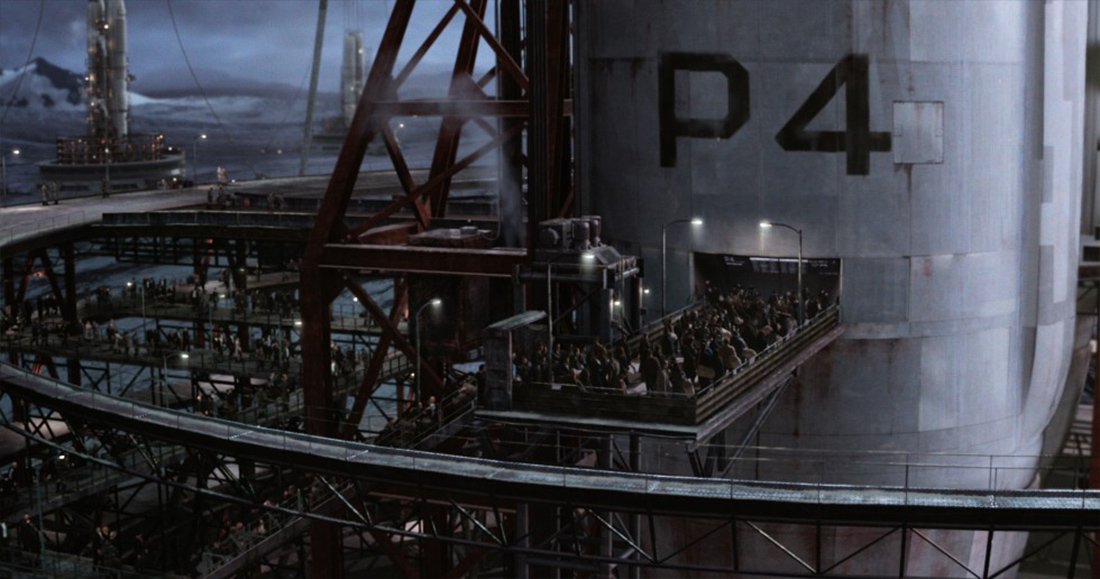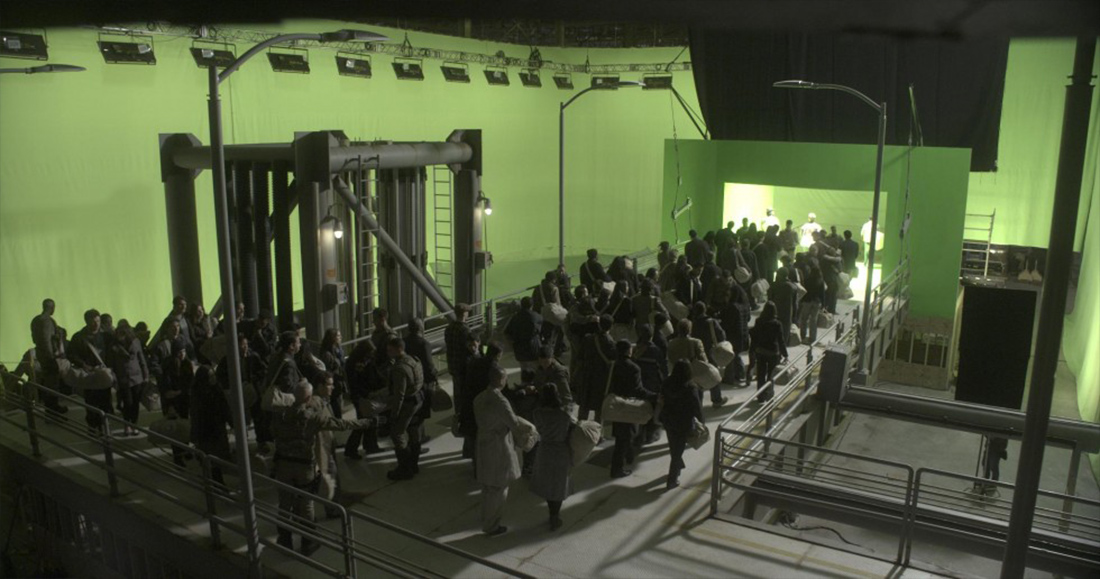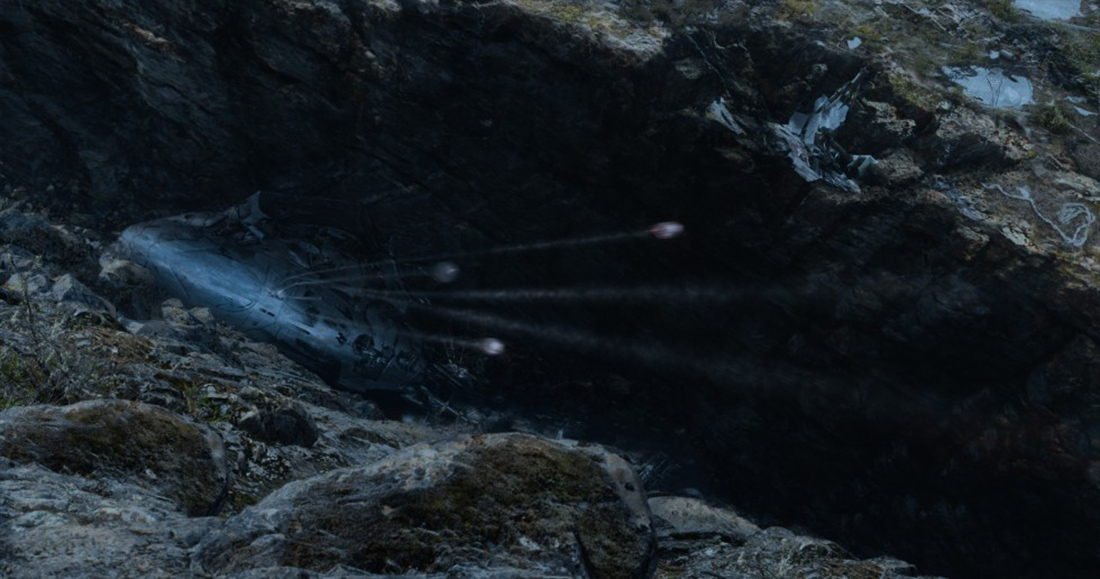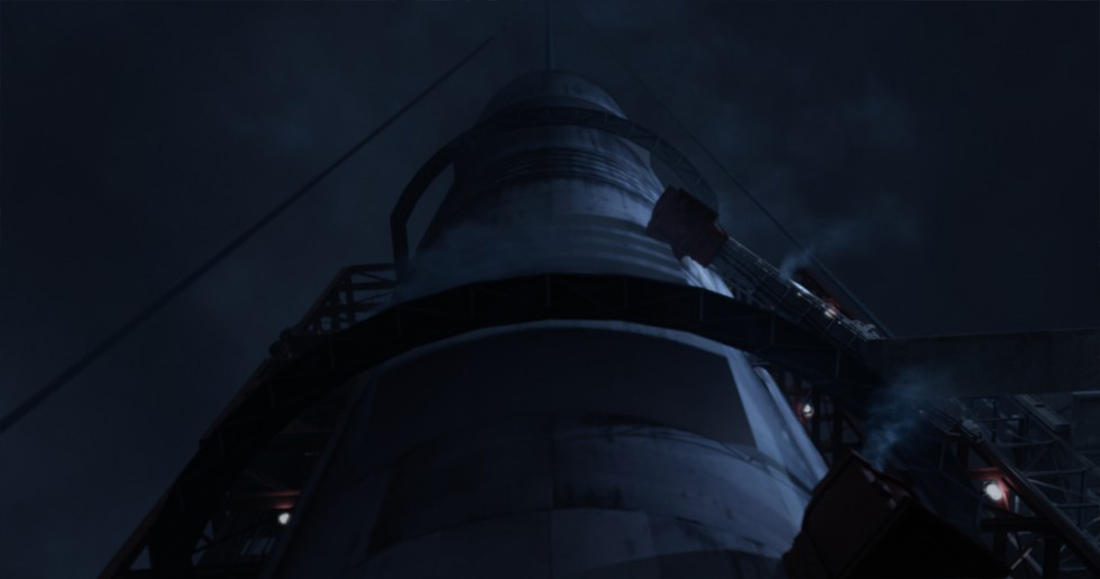Since his interview about UNDERWORLD: AWAKENING, Jeff Campbell has worked on films like ABRAHAM LINCOLN: VAMPIRE HUNTER, RESIDENT EVIL: RETRIBUTION or THE TWILIGHT SAGA: BREAKING DAWN – PART 2. To know more about him, check his profile on Spin’s website.
How did Spin VFX get involved on this show?
We were brought on board through Dive in Philadelphia.
How was the collaboration with director M. Night Shyamalan?
We received Night’s notes from dailies via Dive.
You have worked many times with Production VFX Supervisor Jonathan Rothbart. How was this new collaboration?
Yes, we worked with Jonathan on LEGION and PRIEST, but this production pipe was different where we worked through the very talented guys at Dive. It worked out quiet well as Dive had done a lot of work in post vis and was able to provide approved layouts for our shots and an established colour pipeline. We worked mainly with Dive’s VFX Supervisor, Mark Forker.
What have you done on this show?
We did an opening sequence consisting of three tent pole shots establishing the pod’s that would transport the mass exodus of humanity beyond the Solar System to the new world of Nova Prime. The pods were intended as a type of space transportation system, designed to permit vehicle transport along the cable from Earth, directly into space or orbit, without the use of large rockets. We were later assigned another shot of the damaged Hesper ship crash landed in a crevice on the now quarantined planet Earth. Reconnaissance probes were animated to shoot out of the ship.
What indications and references did you received to create the desolated Earth?
Dive provided concept art from Production from which we were to flush out all the details. The art provided us with a colour palette, composition and scale. Our environment was in the Antarctic in which we were provided a plate of an ice shield to populate with our CG pods and the exiting masses.
Can you explain to us in details about the creation of this environment?
The opening wide shot of the pods only provided a live action ice shield ground plate, everything else is CG. The contact area of our 3D pod launch pads to the icy ground was very important for integration. For speed and creative control, we decided it should be handled in comp. Accumulations of snow and ice at the base of the launch pads, cable bases and the supporting columns were all handled using textured cards in Nuke. Displacements were used to add volume to card elements. Points to position relative to the camera were used to place the cards in the 3d scene.
How did you create the shuttles?
Creation of the pods began with concept art that helped to establish the general layout and overall scale of the structures. Asset Supervisor Tim Alexander and his team studied the mechanics of real world mega-structures like deep sea oil rigs and NASA launch facilities and used similar construction techniques in our own designs.
Refinements were made based on internal art direction. We supplied the clients with various turntables, colour pass concepts and slap comps to get them through multiple stages of approval. We modelled in Maya, textured in Mari, with Lighting in Katana and rendered in Renderman.
What was the real size of the sets?
The 10’ x 30’ ramp to the entrance of the ship was built and shot on green screen. In the wide shot where the people are boarding, we had to mesh warp the plate to account for differences in the practical vs. virtual camera. Since this deformed the people surrounding set, we ended up rotoscoping out the people and replacing the set with CG.
How did you populate these shots?
Using Massive, we custom built Guards mixed with our in house agents to populate the scene. To match the look of the live action people, we dressed our agents in similar kaki clothes and added the same baggage people had in the photography. We built the guard agents from turntable stills provided by production. The main performance challenge we found was to avoid the appearance that the crowd was moving in a steady stream. We needed to provide more randomized movement for the crowd to feel more natural. We used the guards to break up the flow by stopping groups of people, walking against the flow of traffic and having a few agents running.
We had an issue with the live action people entering our CG elevator. In the practical photography, people entering the elevator did not move in relation to our CG designed entrance. It looked like they disappeared because they descended down stairs at the end of the set. Our solution was to rotoscope out the front line of live action plate people and extend the line beyond this with CG agents which entered more naturally splitting into left and right groups.
Can you tell us more about the crashed ship and its environment?
An approved layout scene was provided by Dive and that helped us focus on the creative finishing. We broke apart the ship and built a full CG environment for it to live in. The full CG set provided us with proper contact shadows and occlusions, reflections, and depth of field; all the elements required for a photorealistic finish. Location plates were available but none matched the grandeur and perspective required for the shot. Our Lead Matte Painter Patrick Zentis, masterfully finished the shot for comp to do final tweaks in Nuke.
How did you created the probes?
Dive fleshed out the design of the probes and provided a CG model for us to animate. Vapor trails were added to further integrate the probes in the shot.
What was the biggest challenge on this project and how did you achieve it?
The tight shot on the entrance ramp to the ship was a tough track because of the lack of visual tracking markers. It was a tightly framed plate full of moving bodies and a shallow depth of field, not fun to track at all. We did as good a 3d track as we could in Pf track and added an additional 2d manual track pass in comp to tighten things up.
We also added a CG camera takeover to this shot where your POV looks up at the ship for a couple beats to gain another perspective on the pod.
Was there a shot or a sequence that prevented you from sleep?
No, everything went relatively smoothly. No 911 situations.
What do you keep from this experience?
It was a great opportunity to utilize our Katana pipeline to efficiently handle the large data sets and render times these shots required.
We’re also grateful to work with Mark O. Forker and the talented team at Dive.
How long have you worked on this film?
We started in October 2012 so we had around 4 months. We were happy to have the lead time in developing the pods during the first two months.
How many shots have you done?
Only 4 but they were very demanding because of the amount of CG work involved.
What was the size of your team?
We had a core team of about 15 artists working on the show:
Visual Effects Supervisor
Jeff Campbell
Visual Effects Executive Producer
Neishaw Ali
Sr. Visual Effects Producer
George Macri
Visual Effects Associate Producer
Christa Morson
Digital Supervisors
Tim Alexander
Peter Giliberti
Tim Sibley
Digital Artists
Douglas Addy
Derick Loo
JongJu Lee
Alberto Luceno
Jordan Nieuwland
Patrick Zentis
Richard Owen
Ahmed Shehata
Anton Voytenkov
Sam Chen
Ryan Kitagawa
Joseph Zaki
What is your next project?
Next up is Harald Zwart’s THE MORTAL INSTRUMENTS: CITY OF BONES (Screen Gems), Brian Falk’s GHOSTS OF THE PACIFIC and THE SIGNAL from Producer Brian Kavanaugh-Jones.
A big thanks for your time.
// WANT TO KNOW MORE?
– Spin VFX: Dedicated page about AFTER EARTH on Spin VFX website.
© Vincent Frei – The Art of VFX – 2013

















funny ..they don’t mention how they did the work.!
By making slaves… from 9 am until 3 am everyday ,including Saturdays..and NOT paying overtime.
That’s the reason why nobody in Toronto wanna work at spinVFX, sweatshop.